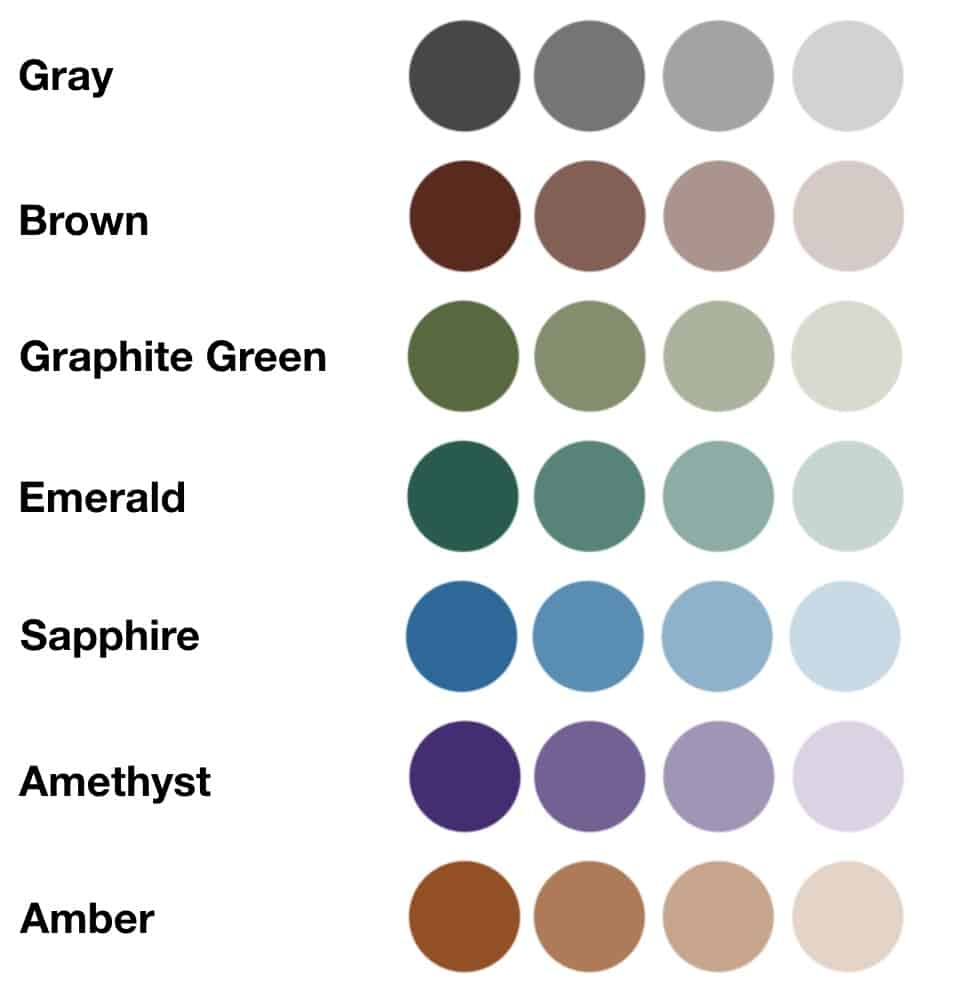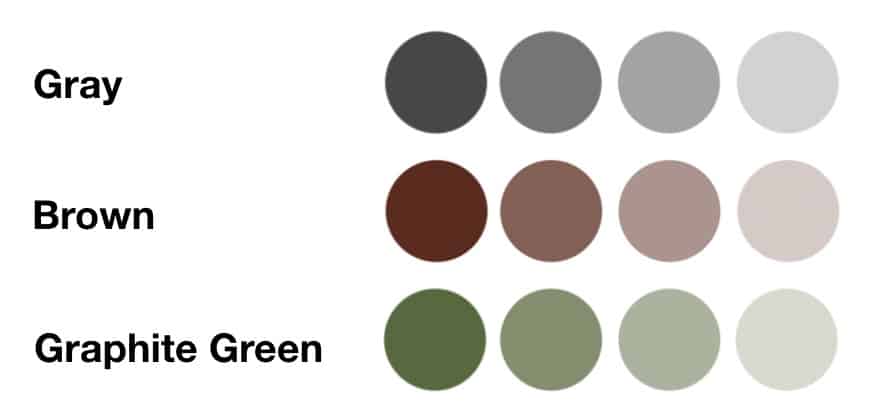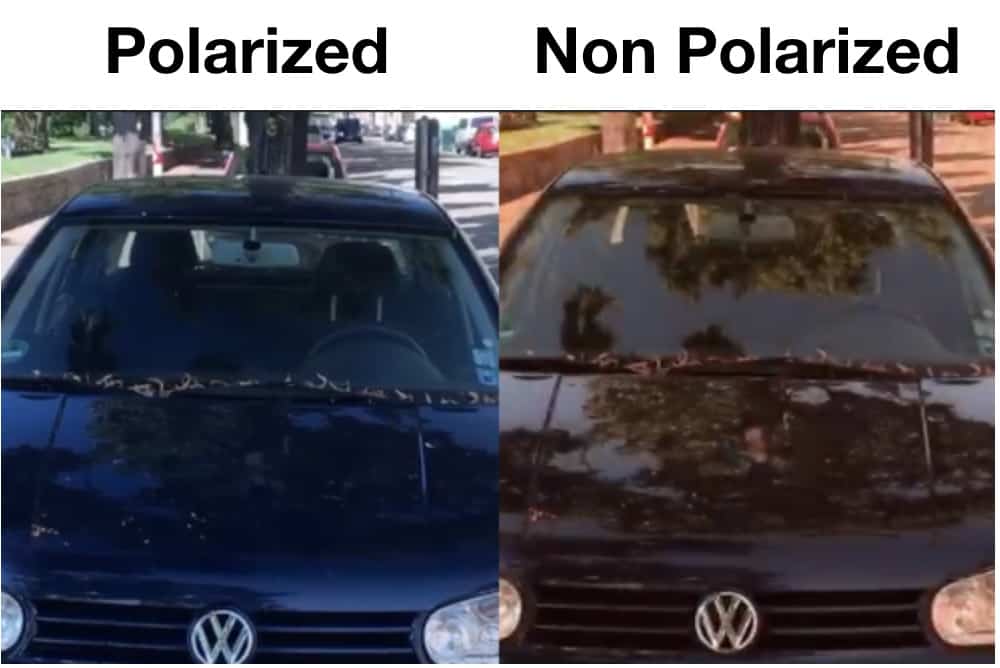Transitions or photochromic lenses automatically regulate their tint of intensity according to UV radiation or brightness in their environment. So if you are sensitive to light and would like to see an automatic tint as pleasant, transitions could be just the thing for you. There are very different products in the market. In this article, we will discuss these and describe the differences in everyday situations.

Please note that we present to you here all the options you can get on the market. Not every manufacturer of progressive lenses has all the colors available. Most progressive lenses come with the option of grey and brown.
But there are a lot more colors available if you could consider switching your progressive lens brand.
Some people call to tell us that not every listed color here is available in their country. Which also can be true. In Germany Transitions currently does not advertise the vantage line. This is awesome and people love it but I need to get it from Novacel. They are the only ones in Germany distributing those transitions. Sometimes you just need to call a few lens labs to find out those things.
Classic Self-Tinting Lenses (Transitions Signature Series)
Those Transition lenses react as already mentioned on UV light. The more UV light is present in your environment the darker they get. When transitions are used indoor their tint is at its weakest. In those cases, it is barely noticeable. Because the lenses are so clear. However, if the sun is shining strong a dark and strong tint like in a pair of sunglasses will appear in the lenses.
Due to the response to UV light, these glasses often remain clear in the car because many windshields today block UV light. So your glasses do not produce a tint until you leave the car. At very warm temperatures, the transition lenses tint themselves a little slower and stay a little less dark. The Opposite happens in a very cold environment. When it is really cold outside transitions will produce a slight tint even if its dark. The signature series is also the fastest responding tint you can get in the transitions models.

Transitions Gen 8 Lenses (Successor of the Signature Series)
The GEN 8 Version is available in the same colors as the tint before. The difference from its predecessor is the faster reaction. The new lenses are up to 3 minutes faster in going from dark to clear. Now the lenses are even clearer if they are not exposed to sunlight and darker outdoors. In addition to that, some customers were concerned by the longevity of the lenses which is also improved.
They stay responsive for a longer period of time. The lab tests over two years showed more consistency in the performance of changing dark to clear and vice versa. They do not age as fast as the signature series.
Glare Protection Also in the Car (Transitions Xtractive)
This type of self-tinting also has a subtle tint at night. The special feature is that these glasses also react behind the windshield and darken in the absence of UV radiation (they reach about 50% tint). In very warm temperatures, the automatic darkening of the glasses takes place faster than with the signature series.

If you want the dye to be active in the car you should check them out and test these lenses. If you want a real-world comparison between the new GEN 8 and the Xtraactive this video will give you some great information.
The Best of Two Worlds (Transitions Vantage)
A special kind of self-tinting lenses is the Vantage version. This combines the darkening of your glasses with polarization. Many readers who appreciate the effect of polarized eyeglass lenses will likely put a smile on their face. This means that you are protected not only from glare through a darker lens, but reflections are additionally absorbed and blinding significantly minimized.
The basic tint of these glasses is hardly noticeable and has a Category 3 glare protection in the case of strong sunlight. This tint is ideal if you are often outside near snow, water, or large reflecting surfaces. Inside the car, these lenses tone up moderately. The more they are tinted the stronger the effect of polarization will be. I really love this tint and I often recommend it to people with a lower prescription.

The reason is this tint is not available in all the materials you could choose with the other transitions tints. So making your progressive lens thinner is not an option and choosing a frame that is rimless is also not going to work with the Transitions Vantage. (At least in Germany and I called a lot of companies)

Transitions Performance Colors
Are you ready to take your game to the next level?
The selection of performance colors has three different tints. None of them is made for driving your car because natural color perception can be altered while looking through these lenses. However, they are great for playing golf. The contrast will be much higher and you can follow the ball easily no matter if it is in the air or just landing on the green. The performance line up of transitions lenses is available in fire brown and power purple.
The Convertible Sunglasses (Transitions Drivewear)
Drivewear lenses also combine an automatic self-tint with polarization. The difference to the transitions vantage version is that Drivewear lenses are already darker in the lightest tint possible compared to a pair of lightly tinted sunglasses. It is not suitable for night-time use but offers a very pleasant contrast during the day. The special thing about these glasses is that they change colors while they get darker.
In the less tinted state, these glasses have an olive-green tone, which looks darker and more coppery behind the windshield. For you, the copper tone means a very pleasant contrast. When you get out of the car and the sun shines vigorously, it comes to the most intense tint of these lenses. Even then, these glasses have the glare protection category 3 and are a tinted red-brown.

Get Here Some Tips to Choose Your Next Tint
As you can see, there are some variants of self-tinting lenses. You should ask the following questions before making a purchase:
Am I Strongly or Slightly Sensitive to Blinding?
As soon as glare sensitivity is present, we recommend having separate sunglasses for driving, which is ideally polarized. The Vantage and Xtractive variants react as mentioned above also within the car, but only with a tint of about 50%. This corresponds to a relatively light tint in sunglasses, which has low glare protection. In the open air, however, such glasses are much darker and the polarization of the Vantage variant can reach its full potential.
I often stay in latitudes where temperatures are generally higher than in beautiful Mannheim (in the heart of Germany). The question may sound a little bit outlandish, but the different variants of the self-tinting lenses react differently at different temperatures. In wintry temperatures, the glasses are a bit stronger and faster and become a little slower clearer again.
However, the Xtractive variant reacts faster even in very warm summer temperatures and ensures the fastest possible adjustment of the tint even in the heat.
Do I Expect the Tint to Darken Behind the Windshield of My Car?
If you expect a reaction of the transition lenses behind the windshield and a tint of about 50% is sufficient – then the Xtractive or Vantage glasses are your ideal companion. You can also test this tint at any time in our shop. We always have sample lenses ready for you. Enclosed you will find an overview of all self-tinting glasses and in which color versions they are available.

Blue Light Filter Come with Transitions
A blue light filter is automatically accompanied by the tint of Transitions lenses. For situations when the tint is just barely there you have a light blue filter of 20% for the signature variant and 34% for the Transitions Xtractive. Once the lenses are darkened, up to 85%, 88% of the blue light is filtered out. Just compare the four options you can get when speaking about blue light filters.
- Blue cut lenses up to 420nm (tint is barely noticeable)
- Blue cut lenses that filter more have a stronger tint (orange/yellow)
- Blue light filters that come with transitions
- Bluelight filters that are on the lenses due to the coating
If you want to choose Transitions in your progressive glasses some colors are only available with the higher-end lenses.
Do Transition Lenses Wear Out?
Yes, after 3 years they will not get as dark as they did when you got them new and they hold a little more tint when you stay indoors. The Gen 8 was made to deliver more durability than its predecessor (signature series). Since the product is so new we do not have any experience with gen 8. But we have years of experience with the signature series.
You can see this process if you compare a new transitions lens compared to an old one. What you see is the different tint times and the intensity of the tint varies slightly. They also tend to hold a little brownish yellowish tone if you are not exposed to sunlight.
How to Care for Transition Glasses?
- Rinse lukewarm water from a water tap above them to get rid of dust
- Take a dishwashing detergent and rub the lens gently between your fingers. It takes away lipids. Rinse everything away on the lens surface
- Take a microfiber cloth and gently rub it dry
You should not leave them in your car on sunny days. Pretty quick in can get hot and those transition glasses are really sensitive regarding their coatings. If you leave them in the car the coatings could be harmed.

How Long Should It Take for Transition Lenses to Change?
The speed at which they change varies with the intensity of the sunlight and the temperature around you. Our tests in our lab brought us the following times.
Change time from clear to dark
- Transitions Signature Series (15Sek.)
- Transitions Xtraactive (14Sek)
- Transitions Vantage (15Sek)
Change time from dark to clear
- Transitions Signature Series (11m 03sek)
- Transitions Xtraactive (20m 06sek)
- Transitions Vantage
It was lukewarm approximately 23°C during our tests. Most people are shocked when they see those results. But users of Transition lenses are really happy with them. In the tests “from dark to clear”, the majority of the tint went away pretty fast. However, there is a slight tint the lenses hold longer.
Are Transition Lenses as Good as Sunglasses?
They can be as dark as sunglasses (85%). But the intensity of the tint varies depending on how much UV light (or brightness in the XTRActive Model) is around you. If you are highly sensitive to light it might be better to get normal dark sunglasses. However, if you want the convenience of not changing your glasses transitions are your best choice.
When you are in your car UV light is probably blocked by your windshield. That is why transitions will not get as dark inside your car as they do outside. This also affects the polarisation in the vantage line. The polarisation starts to kick in at 50% of the tint. In the car, you will get approximately 50%. This means the polarization effect will be moderate compared to when they fully darkened up when you step outside.

What Is the Difference Between Photochromic Lenses and Transition Lenses?
Transition lenses are the brand name for the general term photochromic lenses. They provide the biggest variety of colors and options. Other photochromic brands are listed below.
- PHOTOGRAY® / PHOTOBROWN® SUNSITIVE (Corning)
- PhotoFusion by Carl Zeiss Vision
- Colormatic by Rodenstock
- Sensity by Hoya Vision
- Sensity by Seiko
In the upper part of the article we talked exclusively about the brand transitions and they are using plastic lenses only. If you want to choose photochromic lenses but you prefer your lenses more scratch-resistant there are manufacturers that produce them in glass. They will not have the polarisation effect like the Transitions Vantage and the color options are limited to brown and grey.
Pros and Cons of Transition Glasses
Advantages
- You just need to buy one pair of glasses
- No need to switch glasses (if the tint is sufficient in the car for you)
- blue light filter comes with transitions lenses
- A lot of style options with different colors
- transitions protect your eyes by blocking 100% UVA and UVB rays
Disadvantages
- On photos outside you are always having sunglasses on
- Transition lenses wear out, depending on how often you use them
- Some people notice the slight tint indoor
- Depending on the lens type they can bump up the costs from about 100-200€ more.
- For some people, they take to long to loose there tint when they come into the house from outside
You can get all these different models in progressive lenses and single vision lenses. I hope this article gave you some more in-depth information so you can decide more easily when you are about to buy your next pair of glasses.
